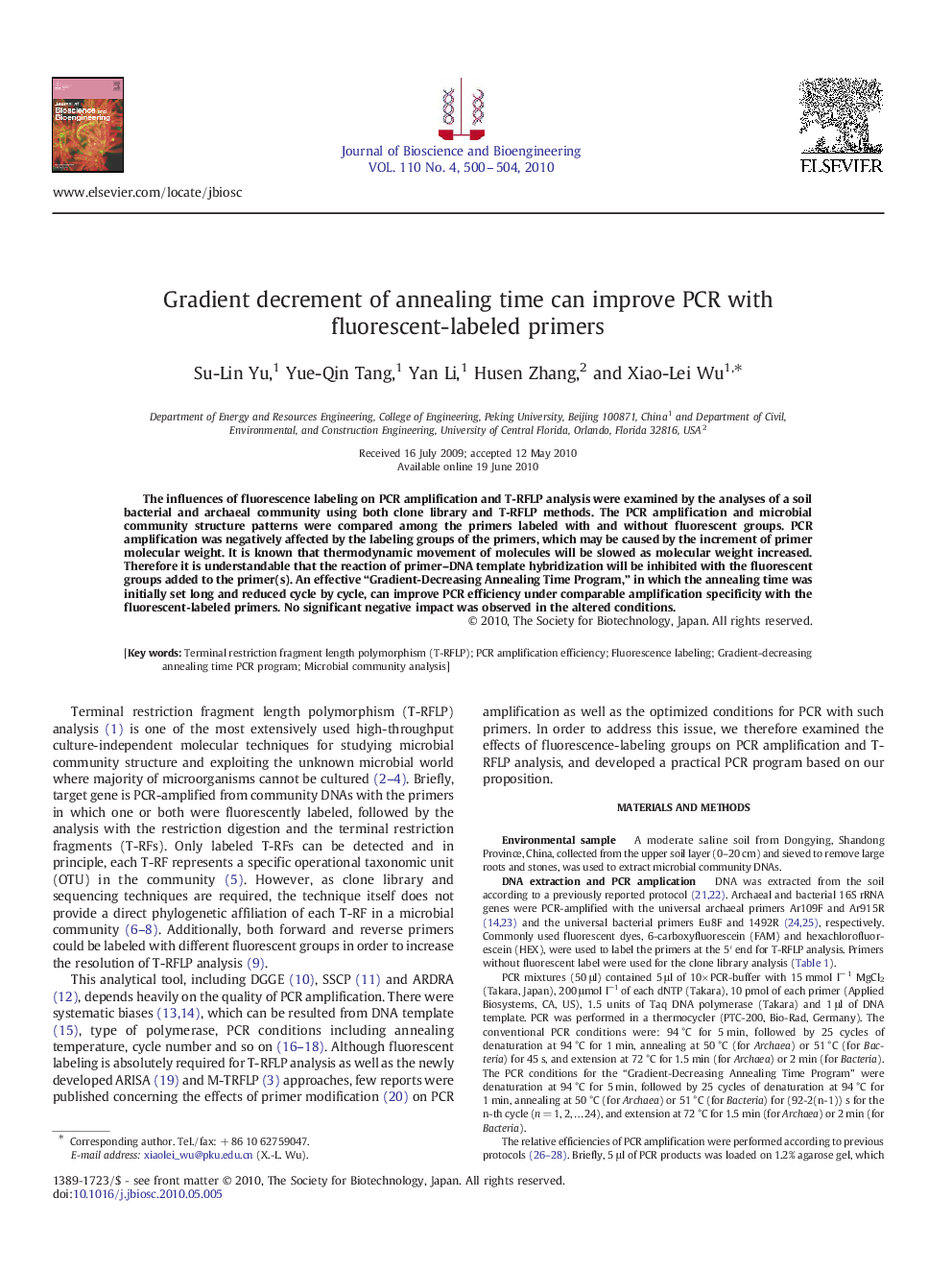| Article ID | Journal | Published Year | Pages | File Type |
|---|---|---|---|---|
| 21409 | Journal of Bioscience and Bioengineering | 2010 | 5 Pages |
ABSTRACTThe influences of fluorescence labeling on PCR amplification and T-RFLP analysis were examined by the analyses of a soil bacterial and archaeal community using both clone library and T-RFLP methods. The PCR amplification and microbial community structure patterns were compared among the primers labeled with and without fluorescent groups. PCR amplification was negatively affected by the labeling groups of the primers, which may be caused by the increment of primer molecular weight. It is known that thermodynamic movement of molecules will be slowed as molecular weight increased. Therefore it is understandable that the reaction of primer–DNA template hybridization will be inhibited with the fluorescent groups added to the primer(s). An effective “Gradient-Decreasing Annealing Time Program,” in which the annealing time was initially set long and reduced cycle by cycle, can improve PCR efficiency under comparable amplification specificity with the fluorescent-labeled primers. No significant negative impact was observed in the altered conditions.
